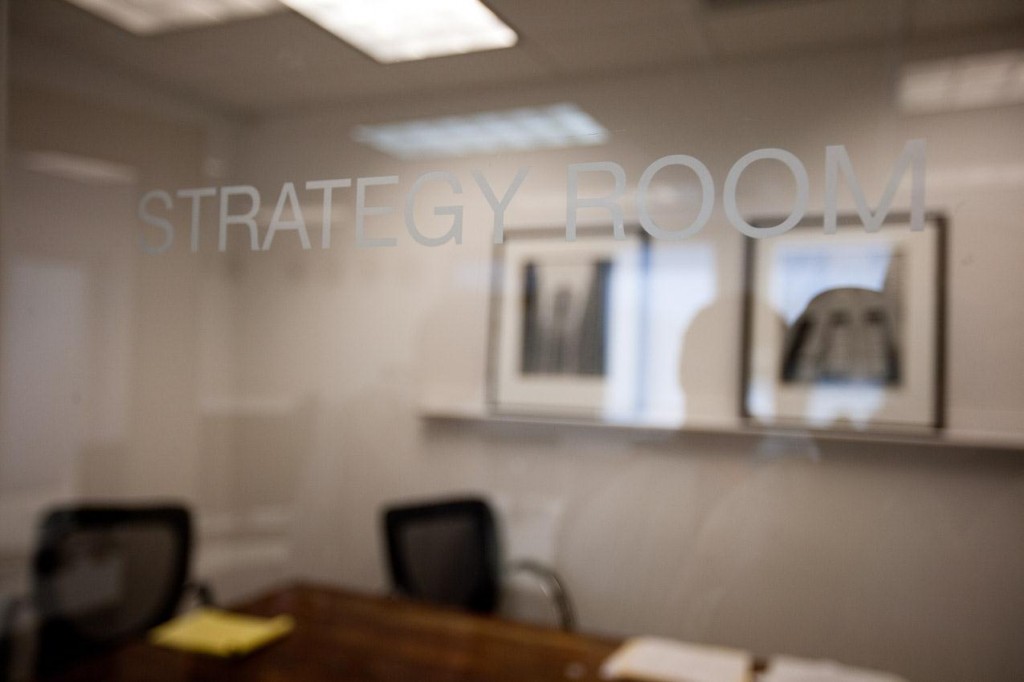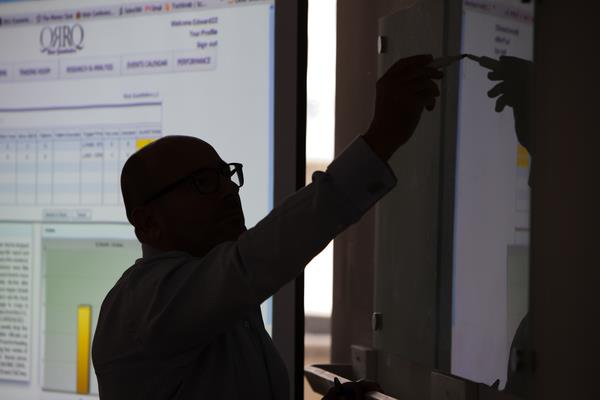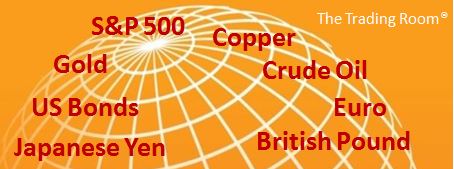What’s going on? What are the markets telling us? What’s next?
Friday’s February non-farm payroll report surprised the markets to the upside. The unemployment rate dropped to 7.7% from 7.9% in January. The S&P 500 maintained most of its recent gains however Treasuries including the Ten Year Note and Bonds immediately sold off. Interestingly, the US Dollar spiked higher while Copper and Crude Oil traded sideways without any clear direction. The jobs report coincides with the recent string of positive economic data, suggesting strong growth in the US economy. In the week ahead traders will be focusing on upcoming economic data releases for insights to potential economic growth activity. In the FX market the spotlight should be on the US Dollar, therefore I will be looking for trading opportunities in the Euro, British Pound and Japanese Yen. In the Commodities market, I will be paying close attention for a potential breakout or breakdown from the recent trading range in Crude Oil and Copper.
The current fundamental backdrop suggests that the US economy might be on target to grow by 1.5% this quarter. Treasury yields which tend to have a positive correlation with the US Dollar, broke above 2% on Friday, the top of the long-term range. When bond values go up, yields move lower, therefore when yields move up, bond values go down.
Are the currency and bond markets trying to tell us something? The recent rally in the US Dollar might be pricing-in higher yields in the near future. Back in December the Fed made it clear that job creation had become its primary focus, announcing that it planned to continue suppressing interest rates so long as the unemployment rate remained above 6.5%. There have been false starts and although we are still above the Fed’s unemployment target, the market always seems to catch investors by surprise. I strongly suggest for active traders to focus on these two asset classes in the upcoming weeks.
The US dollar is a beneficiary should U.S. Treasury yields continue to rise. To better understand the correlation and relationships of different asset classes, we must look at the macro fundamentals of the market. The market moves in recurring cycles. The cycles unleash a sequence of events that may be predictive in identifying key stages and trends ahead of time. We know today that Newton was correct in the theory of simple and clocklike cycles. Applying the great leaps in science to economics in the financial markets is only logical. Having a better understanding of economic and business cycles can help a longer-term investor shift from one asset class to another. For a day-trader it can assist him by selecting markets poised for powerful and directional movements and/or volatility. You will take note of the effects of different sectors of the economy and markets as they expand and/or contract as the cycle pushes the stages from one phase to the next. Globalization and the information age we live in today makes the cycles more powerful. There is a cyclical relationship between the economy and the financial markets. The financial market cycle is directly linked in anticipation, typically six months, to where Wall Street (stock, bond, commodity and currency markets) thinks the economy is heading.
Economic data reports such as Friday’s employment data supercharge prices into volatile movements. Movements in the stock, commodity, bond and currency markets are directly related to the outlook or expectation of economic growth. If the economic expansion is expected to grow, then stocks and commodity prices will also increase. When economic contraction is expected, then stocks and commodity prices fall while bond prices increase. The Fed targets the US economy to grow at approximately 2 1/2 to 3% annually over a period of time. However, the economy never grows at the same rate all of the time. Economic cycles have a direct effect on the business cycle. There are four basic stages of a complete business cycle.
The first stage can be categorized as the beginning turn or when the economy starts to come out of a period of slow growth stagnation or recession and then begins to show signs of acceleration. During this stage money supply rises rapidly, liquidity is injected into the financial system, and interest rates drop. The second stage occurs when economic growth rises above the long-term rate, this is considered the boom stage where everything seems to be working as intended. In the third stage the growth rate returns to harmony with the long-term growth rate. This stage usually identifies the beginning of a correction. Interest rates begin to rise and the US dollar bottoms and begins to strengthen. The last stage of the business cycle is when the growth rate declines and falls below the average long-term growth rate. All excesses created in the prior stage are reduced and brought down, sometimes dramatically. The increase in interest rates and the decline in the money supply that began in the preceding stage causes the economy to contract.
Let’s focus on the distinctive events during stage II and III of the business cycle. During stage II money supply continues to expand rapidly, leading to a peak. Corporate earnings increase rapidly. Stock market bull cycle continues to mature, eventually leading to a market top. Dollar remains weak but eventually strengthens. Commodity bull market matures. Interest rates bottom and eventually begin to rise. During stage III of the business cycle money supply begins to decrease and continues trending downward. Corporate earnings peak, then slows down. Stock market becomes weak and vulnerable. The US dollar strengthens. Commodities peak then begin to fall. Interest rates continue to rise eventually peaking.
Of course not all cycles are exactly the same. Some cycles include bubbles but not all. However, a typical recurring event is one of overbought, over bullish with rising yield conditions which were evident in the basic environment that we faced in 2000 and 2007, both included bubbles. While the Fed continues its policy of quantitative easing, that policy is fully recognized and investors are now relying upon its continuation. A sign that could be pointing to an eventual event that will surprise investors.
Therefore Friday’s price action may be an early sign that the markets are at least keeping a close watch on the potential of an upcoming shift of expectations. Should yields continue to rise while the US Dollar strengthens then commodities and equities should be vulnerable to a correction. How long can the fed’s deep pockets and willingness of quantitative easing continue to satisfy the bulls? Was Friday’s reaction in the currency market the canary in the coal mine or a false warning? It might be too soon to know, but the astute trader should remain diligent in his efforts to properly assess the markets and be selective in choosing the markets to trade.
The RQ Professional Traders Retreat workshop will be held April 8th – 12th in our headquarters in Coral Gables, Florida. Join us in a week full of live trading and advanced training. For more information contact me at joegrios@gmail.com.



